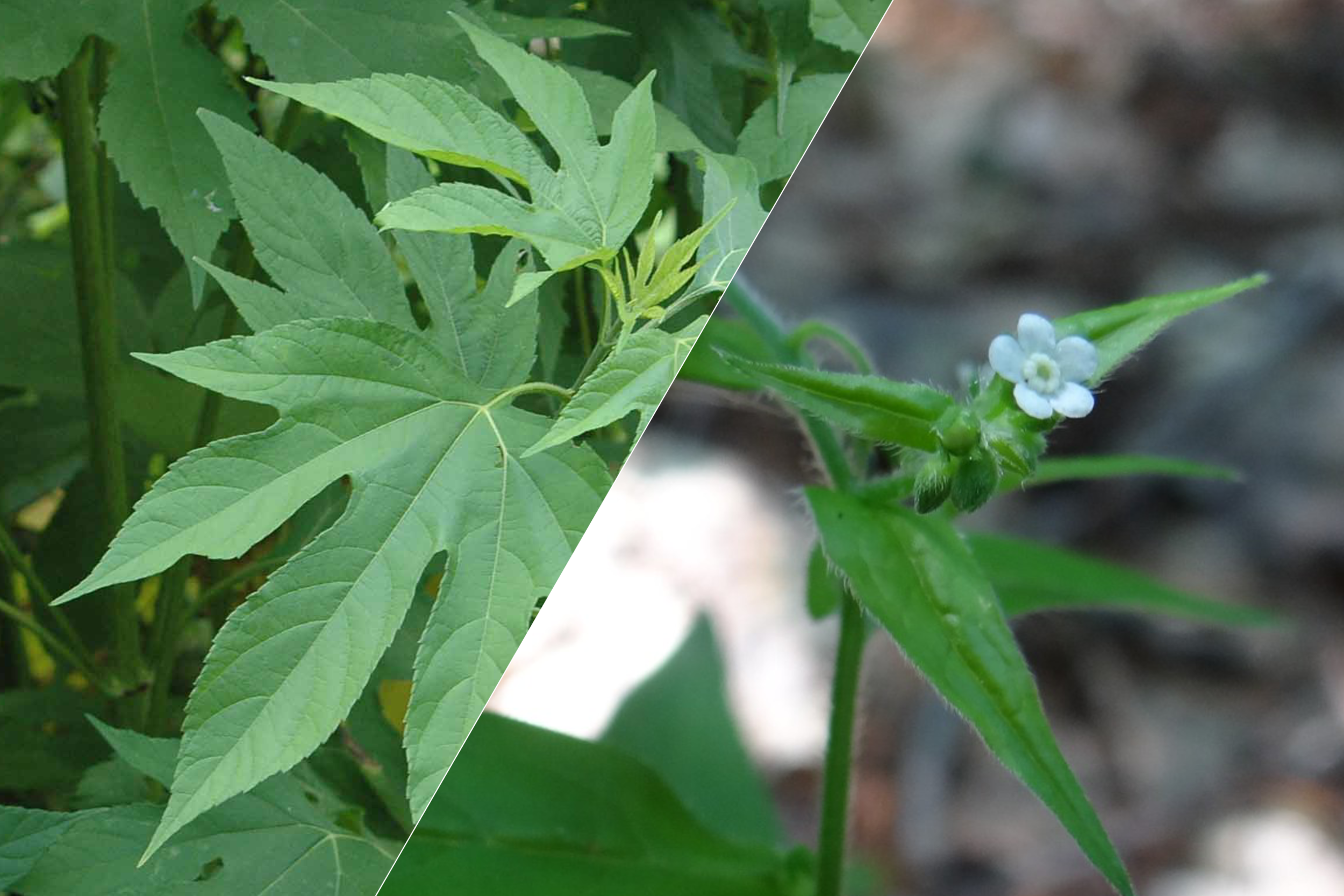Pease Park could use your help. Since we’ve been social distancing, we haven’t been able to host our annual volunteer events in the park. We’re asking our volunteers to help curb some of the Ragweed and Stickseed that has popped up in Pease Park while also maintaining a safe distance away from each other.
About Ragweed
Ragweed is a native but aggressive species found all over Central Texas. If you have allergies in the fall, Ragweed is most likely the culprit. A single plant can produce up to 1 billion pollen grains. These grains are very lightweight and float easily through the air, blanketing most of Austin every fall. Moreover, as the planet warms due to climate change, we’ve seen the pollen season of this plant start earlier every year. The increasing temperature also increases the amount of pollen each plant produces. So, it is vital that we work in the spring to reduce the amount of Ragweed in the park. Please note that if you are a fall allergy sufferer, we recommend using an abundance of caution when interacting with this plant. Pollen isn’t produced until the fall, but we’d like everyone to be overly cautious. If your allergies are severe, we recommend picking up litter instead.
Ragweed is an annual plant that grows and spreads quickly, taking up huge swaths of parkland and preventing other more desirable plants, such as pollinators and trees, from taking root. Typically in the spring when the Ragweed is just starting to sprout, Pease Park Conservancy leads volunteers in a Ragweed pull throughout the park. Because Ragweed doesn’t produce seeds until late in the Summer, it can be pulled and dropped in place until then. Once pulled, Ragweed will naturally decompose and add nutrients to the soil. In lieu of our normal volunteer events, we hope you will help us by pulling some Ragweed on your morning walk or afternoon jog!'
ABOUT Stickseed
Hackelia virginiana, more popularly known as Stickseed or Sticktight, is a common food source for quail and deer, is pollinated by bees, and is a larval host to several butterflies. However, in home gardens and public parks, such as Pease Park, it can be a menace. Stickseed is often described as a velcro-mimicking weed that sticks to your shoes, socks, and your dog's fur. Because they are tiny and sticky, Stickseed seeds are incredibly difficult to remove from clothing and fur. For these reasons, this DIY volunteer activity will focus on removing Stickseed from the park
Stickseed relies on “hitchhiking” to disperse its seeds and spread its growth. The white flowers produce small hook-like seeds on the pods that they grow. The hooks attach themselves and travel with people and animals to other destinations until they fall or are pulled off. Because of this, Stickseed will germinate readily and can become weedy, sometimes overtaking lawns and flower beds.
REMOVAL
Stickseed and Ragweed should ideally be removed in spring and early summer before the flowers go to seed. In areas that are not mowed, Stickseed can be removed by hand. In loose soil, this plant can be dug or pulled out. If it has already come to seed, all parts of the plant should be carefully collected in a plastic bag that can later be disposed of properly. These steps ensure that the seeds are not spread further. If the soil is too compacted to pull the Stickseed up, shears can be used to cut the plant at its base.
Ragweed can be pulled or cut in the spring. Once the plants get larger than a few feet and the summer heat begins to dry out the soil, pulling may become too difficult and the Ragweed will need to be cut. This can be done with a pair of hand shears or with loppers. Any Ragweed you cut or pull can be dropped and left where it was removed, as long as it hasn’t gone to seed (seeds generally appear in the mid to late summer). The plant will act as mulch and decompose into the soil. Just please make sure any Ragweed stocks are clear of the trail.
Helpful Tips:
Avoid wearing any type of fleece or denim as these materials act like magnets for the seeds of the Stickseed. Try instead wearing nylon or corduroy.
Any tool that will scrape the seeds from your clothing is sufficient to help you remove Stickseed, but the tool that will work the best is either a butter knife or a small pocket comb.
Clean off shoes and clothes of any seeds before traveling to other locations and dispose of the seeds in the trash.
The bag that you use to collect Stickseed can also be used to collect litter!
Check out our video tutorial on ragweed removal below:
The map below shows where Stickseed and Ragweed are most commonly found in the park:
DO’S AND DON’TS
Here’s a quick list of some “Do’s and Don’t’s” when pulling Ragweed or Stickseed in the park.
Don’t:
Don’t take any action that jeopardizes your health & safety, or the health & safety of others
Don’t make a pile of Ragweed (please, do leave it where you pulled it)
Don’t leave gloves, trash bags, or other items in the park
Don’t pick up hazardous items such as broken glass, razor blades, syringes, hazardous household products, dead animals, condoms, all unlabeled jugs, bottles and drums, etc. (if you find hazardous items in the park please report to the city by calling 3-1-1, or emailing us.)
Don’t approach encampments in the park
Do:
Do practice safe distancing at all times & wear a face covering and gloves
If you go off-trail, do wear long pants and closed-toed shoes
Do watch out for, and avoid, Poison Ivy - “Leaves of Three, Let It Be”
Do wear sunscreen and stay hydrated
Do pull or cut Ragweed and drop in place, avoid piling it up
Do properly dispose of litter
Do use caution when handling Ragweed - it is an allergen
STAYING CONNECTED
We love to see what our volunteers are up to! Each spring we are able to host large volunteer events at the park to connect with each other and our environment. Though our volunteer activities look a little different this year, we still want to see and interact with you all. Follow and tag @peasepark on Instagram with your before and after photos of your DIY volunteer contribution, whether it be Ragweed and Stickseed removal, or even cool flora and fauna that you come across, selfies, pictures of your dog, etc. Make sure to also use the hashtag #PeaseDIY to connect with and see what other volunteers are up to!



